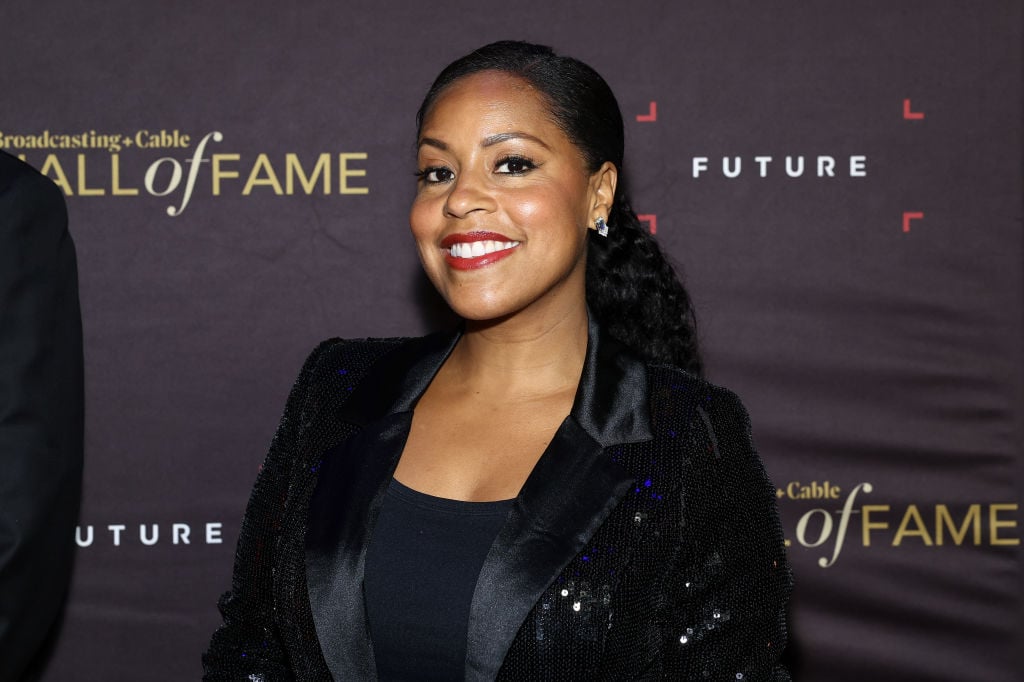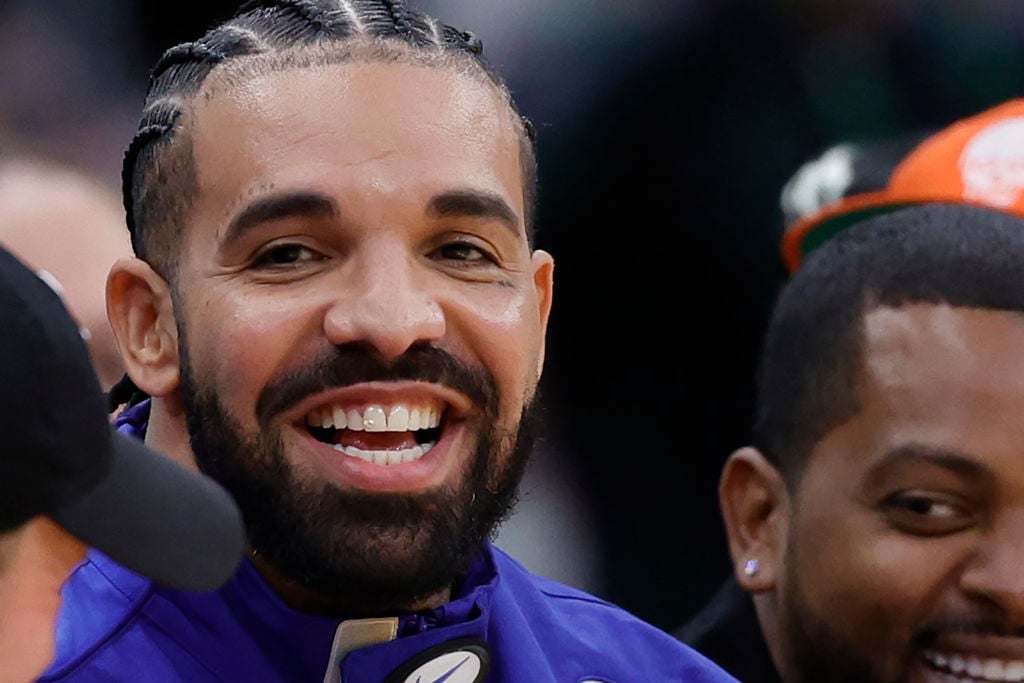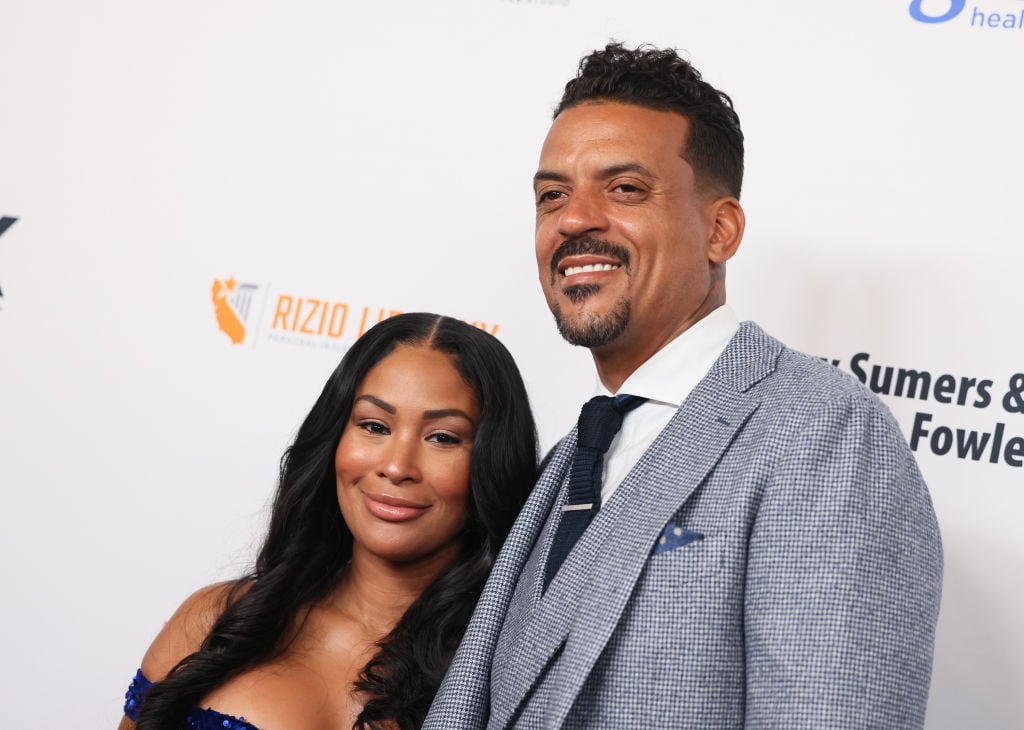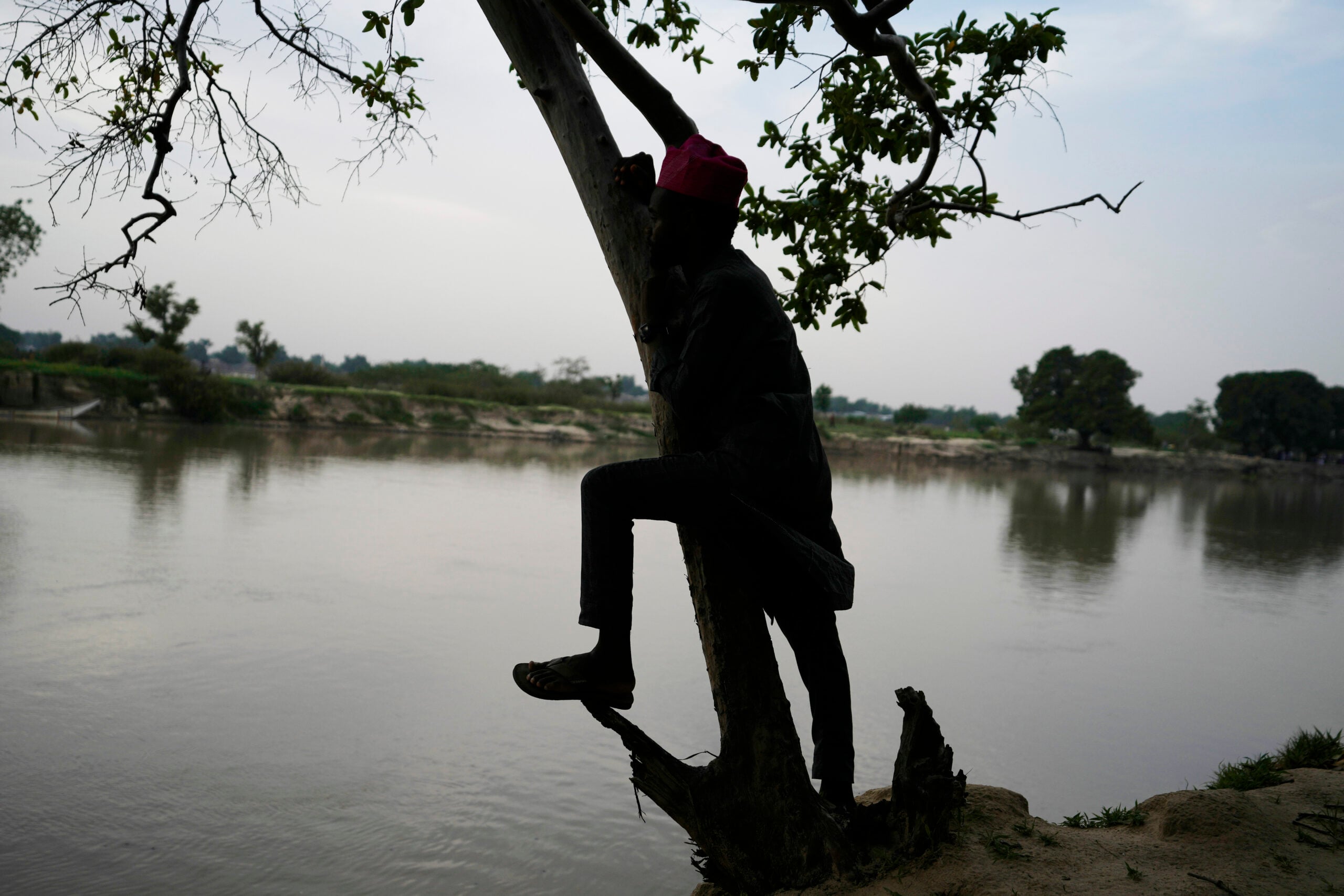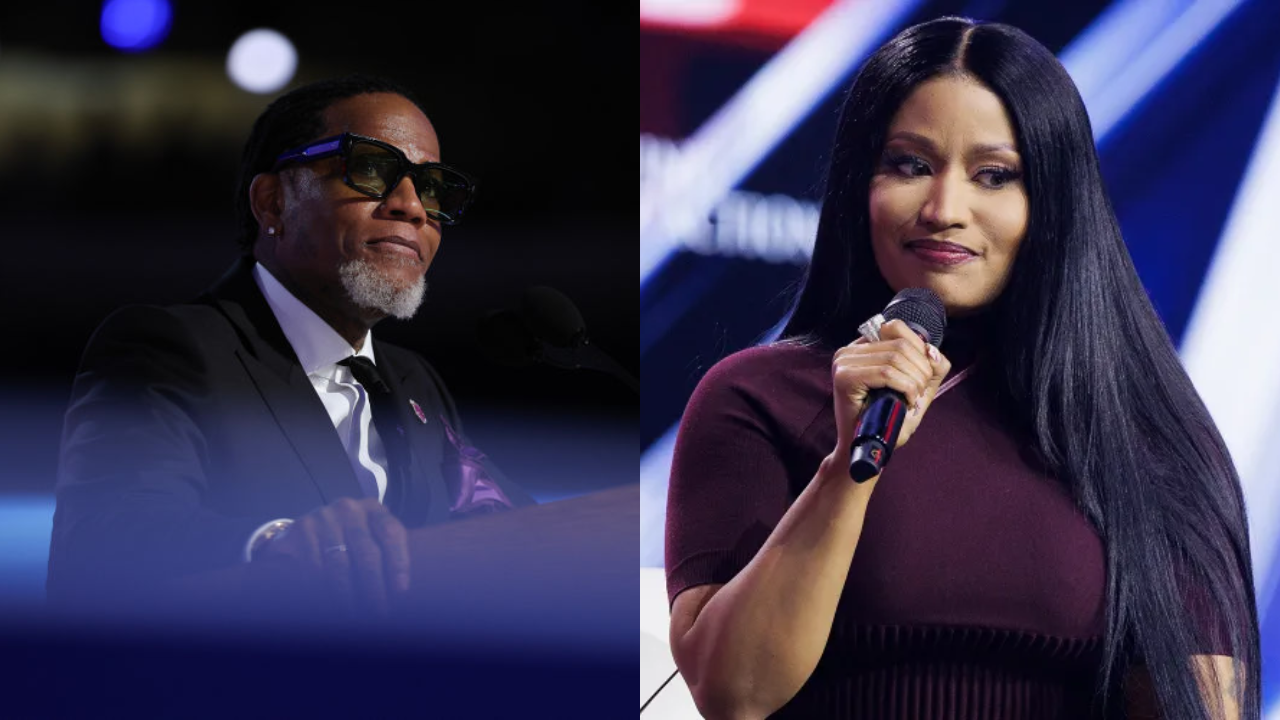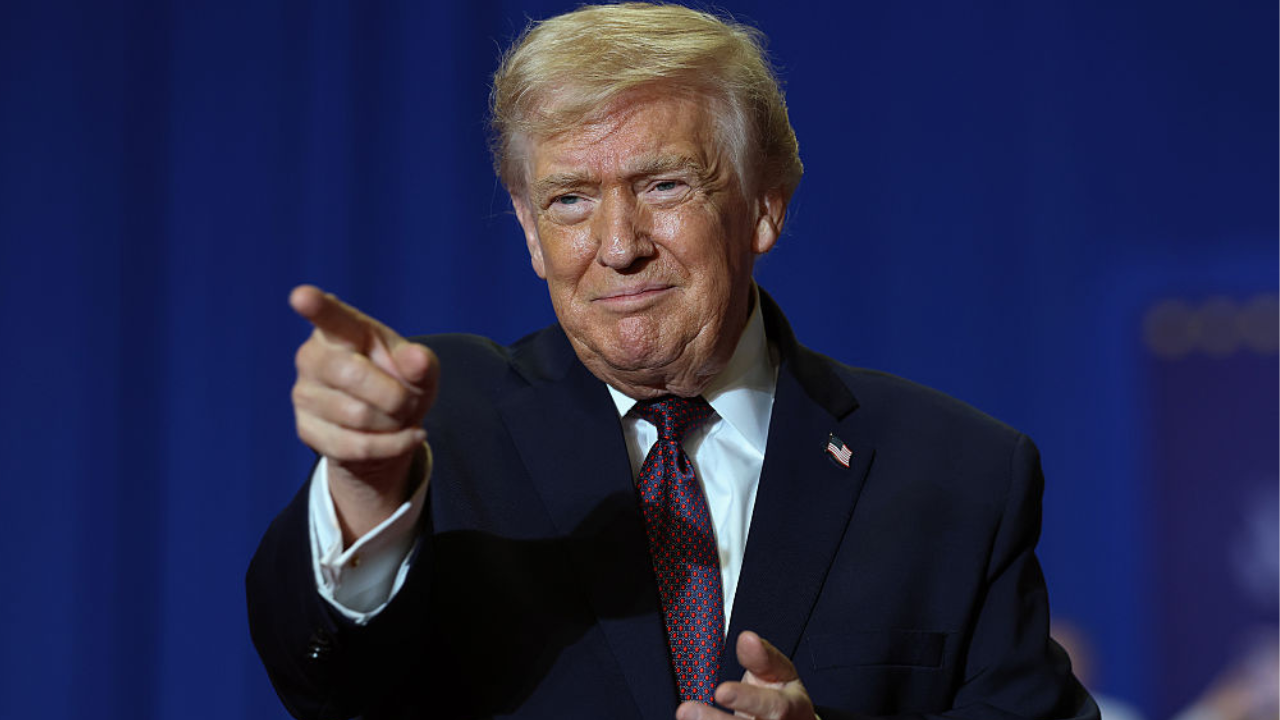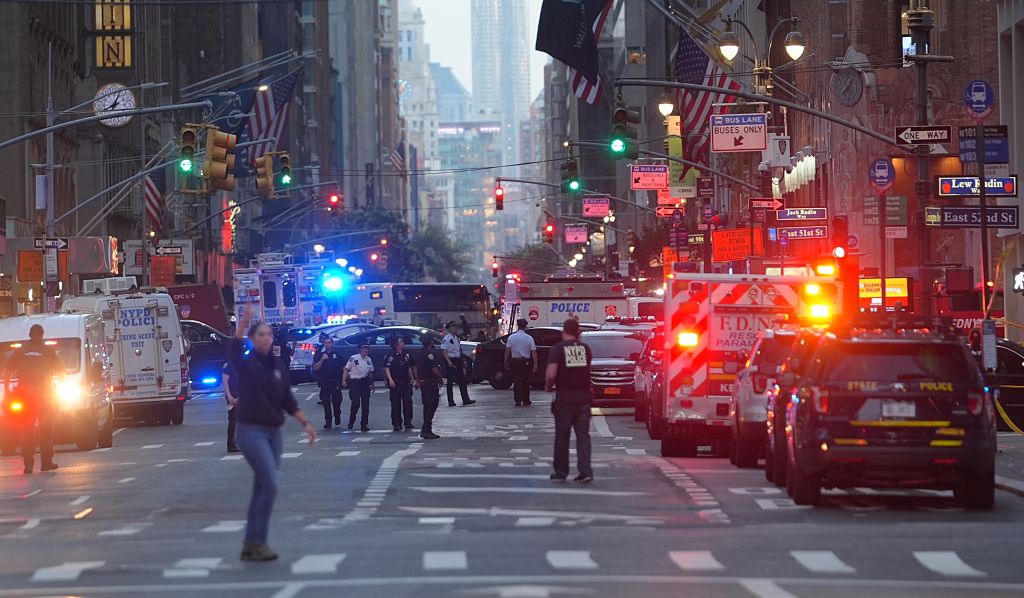An oral history of Jeezy’s infamous ‘Snowman’ T-shirt

Let’s make one thing clear: Jay Jenkins, better known as Jeezy, never had to rap.
“Jeezy had Lambos and every car you could imagine before the record deal,” multi-platinum producer Drumma Boy told Andscape.
Holding court in Atlanta as the 4x Trapper of the Year, the Georgia go-getter in 3x T-shirts had made more money in the streets than any album advance could provide. At age 15, he bought his first Presidential Rolex. In a decade’s time, execs of the suit-and-mob-ties variety were throwing bags and briefcases at Jeezy, looking to legitimize his music hustle.
Caught in a bidding war between Big Meech, Puff Daddy and Jay Z, the trapper turned rapper who never lied – not one time – landed two record deals: a group contract with Bad Boy South and a solo slot at Def Jam.
To make good on his investors – and the colossal risk of leaving a lifetime of illegal equity behind – the 27-year-old high roller had to truly master his aesthetics and market them, too.
Ray Tamarra/Getty Images
“It was an angry Snowman,” former Def Jam marketing SVP Ashaunna Ayars told Andscape when recalling the T-shirt that changed everything. “I had a friend print like 1,000 shirts. The Trap or Die mixtape was growing, the kids wore it, and it got banned in schools.”
“I built something that’s bigger than me,” Jeezy told Andscape. “That’s why he’s still here 20 years later. You can’t ban the Snowman.”
Two decades ago, Jeezy and his infamous Snowman T-shirt were truly abominable, shaking speakers and terrorizing teachers from Brooklyn to Compton. Bans and bootlegs only made the Snowman bigger, paving the way for his Def Jam debut, Let’s Get It: Thug Motivation 101, which went double platinum and set up one of hip-hop’s most inspirational success stories.
From selling dope to selling hope, this is the oral history of the Snowman tee.
This conversation has been lightly edited and condensed.
In 2004, Young Jeezy, as he was known then, was a wanted man. Constant calls from P. Diddy, skyscraper sitdowns with LA Reid, and pressure to sign with Black Mafia Family Entertainment – the hip-hop promotion arm of Big Meech’s Black Mafia Family (BMF) drug-trafficking ring – were all in motion as Jeezy eyed an opening to leave hustling behind and go all in on music.
Straddling the streets and multi-million dollar deals, the unsigned artist upped his price by booking out Atlanta’s legendary PatchWerk Studios – home to Outkast, Ludacris, TI, and more – to craft a project and persona distributed for free.
Nico Solis (TM101 engineer): BMF booked out PatchWerk for two weeks, which was unheard of at the time, for a mixtape.
They’d pay in $10s and $5s with 3-foot stacks for the sessions, almost $3,000 a day. And they did it for a mixtape – something they were giving away.
Curtis Daniel III (co-owner of PatchWerk Studios): Jeezy stayed in the studio all the time. He looked at it like going to the office, doing 12-hour sessions. He’d spend days on his craft.
Solis: BMF and Jeezy were the first guys who would wear their jewelry when they came to the studio.
They’d come to the studio in BMWs, Lamborghinis, Ferraris. They were coming to the studio, making a scene and doing their thing.
Daniel: They’d be working from 6 p.m. to midnight, hit the club until 2 a.m., and then they’d bring the club back to the studio. There were 100 people in the club. There were 70 of them in the studio when they were making the record, creating that vibe.
Solis: We did “Icy” and that’s when he became the Snowman. Gucci Mane mixed it, took it to the clubs, and put the Auto-Tune on it. He really worked the streets. Two or three months down the line, and Jeezy had a Snowman piece on.
Ashaunna Ayars (Ayars Agency founder & former SVP of marketing at Def Jam): Jeezy called himself the Snowman. Every time he dropped a project, the starter kit was a new chain and watch.
When he was dropping Trap or Die, he bought a new chain, and the chain had an iced-out Snowman, which wasn’t normal. It was very unique.

Rick Diamond/WireImage
In Atlanta, the newly crowned Snowman was on fire. “Icy” and Trap or Die were owning the clubs, with a solo situation at Def Jam carved out exactly to plan.
Back in New York, the execs at Jeezy’s new label needed a way to introduce the world at large to their multi-million-dollar man.
Ayars: Mike Jones had a T-shirt with his phone number on it. We didn’t use viral back then, but it was a viral campaign.
Mike Jones (multi-platinum rapper): I had to create a story to get my name out. My grandma was like, ‘You need to do something nobody else is doing: You’ve got to be accessible to the people. You’ve got to give them your phone number.’
I didn’t really get where she was going with it. But after she broke down why it was important to be accessible and stand out, I made the shirt, and that’s where the Property of Mike Jones: 281-330-8004 shirt came.
The first phase? Everybody was laughing like it was a joke. When I got the fans on my side calling the phone number, it worked.
By the time I’d given away 500 shirts, they saw I was a genuine dude and I’d already put in my 10,000 hours.
Ayars: With Jeezy coming from Atlanta, I wanted to think of things that would be creative but universal. That Snowman is universal, so putting it on a T-shirt turned it on its head in an unexpected way, but anybody could relate to it. Creating an “oh-s—” moment.
It was an angry Snowman. It didn’t look like the Snowman on this chain. Working at Def Jam, I had a friend who used to print merch.
Eif Rivera (director): I was doing logos and T-shirts for a lot of artists. I get the call from Ashaunna, because me and her had worked prior on Wu-Tang merch, and she says, ‘Yo, I got this Snowman thing. We’ve gotta print these things up.’ Raymond Boyd/Getty Images
Me and my guys took the logo and blew it up. We stamped it on a T-shirt, and that was it.

Jones: When I first saw it, I thought it was smart. Some people keep business cards, some people throw them away. But a T-shirt? You keep that motherf—–.
Daniel: He was mean-mugging and bald-headed just like Jeezy.
Rivera: I didn’t know it was going to be that big of a thing.
At the same time, the Snowman moniker and shirts were starting to catch on, and Jeezy was working records and relationships across Atlanta.
Signing a group deal through Bad Boy as a member of Boyz N Da Hood and a solo contract with Def Jam, Jeezy was using mixtapes, T-shirts and the manpower of BMF to take over the entire city and club scene.
Drumma Boy (multi-platinum producer): We started seeing the Snowman tees during Trap or Die. Seeing BMF at his shows, and they were wearing the shirts, too.
That took it to another level because there are 100 guys moving, and they f— with Jeezy. It made Jeezy just have this undeniable presence in the streets.
Larry “Nuface” Compton (hip-hop historian): Once they had the billboard up there, they were doing what labels are doing now, from marketing and street teams.
You see people and sections move, the backdoor opens, and nothing but BMF shirts and Snowman shirts. It was Meech and the team coming in, and everybody had a bottle.
Daniel: They traveled so deep. When they rolled up, it might be 35 all-black cars that you ain’t never seen. When you go to a club and everybody has on Dickies and a Snowman shirt, it’s a movement, and it makes you want to be a part of it.
Nuface: They wore what they wanted to wear. It could be an all-white party, and they’d show up in all black. You’d see somebody get turned around for their shoes, but not BMF.
BMF introduced making it rain. You knew when they came that new music was going to be played. At the birthday bash, [Meech] wanted to throw money out of a helicopter.
Ayars: It was everything in excess. To see this lifestyle that was being talked about on records in real life. Tour buses are pulling up with hundreds of guys in black tees and hundreds of bottles of champagne.
Daniel: You couldn’t get Cristal in the city – and I’m not exaggerating that. They would buy up all the Cristal in the city, and they’d hold it for them.
There were movements prior, but not with money like that.
Ayars: Jeezy and his crew ran the city. It wasn’t about anybody else; it was them. They were the singular crew creating that energy versus The Tunnel, where people came from all over the country. In Atlanta, it was that type of energy and crowd for one crew, one guy.

John Ricard/FilmMagic
Before long, Jeezy’s rep and records were reaching far beyond the Peach State.
As leaks of his Def Jam debut started circulating, the Snowman effect was sweeping the nation.
Andrew Barber (Fake Shore Drive owner): I’ve been to a number of Jeezy shows in Chicago. I’m not a street guy, but there would be a lot of heavy hitters in the room and backstage.
Everybody would come out to support. He really hit a sweet spot with people. People were really into his story. I had the bootleg from a message board. That version of the album is a little different from the retail version, but it exploded.
Ayars: It was aspirational, but it was really happening. Seeing it in real life made it more than just a music video fairytale. The movement he was a part of was so real, and it was gaining notoriety and traction.
Johnny Nunez/WireImage
Bianca S. Mendez (former mix show producer and Jeezy assistant): I heard stories of Allen Iverson being in the club telling DJs, ‘Just play Thug Motivation straight through. I don’t wanna hear anything else.’
Barber: As we got closer to the release date, it got bigger and bigger. When it came out? It exploded. Bootlegs back then could kill the hype of a release and the album sales. But the Jeezy stuff kept growing, and growing, and growing.
Then you started to see the t-shirts pop up.
On July 26, 2005, Let’s Get It: Thug Motivation 101, Jeezy’s Def Jam debut, was officially released.
Across Atlanta, bottles popped and Beyonce pulled up as Jeezy bought out Visionz nightclub to celebrate his solo arrival, flanked by BMF and backed by Jay-Z. Within weeks, he’d have the No. 2 album in America despite the leaked version circulating on the streets for months.
Around the country, black T-shirts bearing the Snowman started to spread like wildfire.
Nuface: At Visionz for his album release party was where I got my shirt. They were giving them out. The Snowman shirts were already in the city at that point.
Solis: New York was the Mecca, and I was seeing the shirts everywhere. Going back home to Miami, the shirts are all over the place.
Rivera: I remember doing G-Unit shirts, Terror Squad shirts, Roc-A-Fella shirts. Everyone was doing shirts, but this was like Apple: Simple sells. You could spot it a mile away and know exactly what it was and what it meant.
Jeezy: I remember going up a highway in Atlanta by Spelman. Right there at the exit, a homeless man had on a Snowman tee. I gave him some bread, but the shirt was fresh! It looked like he had just put it on and went outside. He definitely knew who I was.
Barber: In Chicago, you might see one on a train, or you might see a couple going out. Then you started seeing them everywhere. I talked to some street team people over the years, and it seemed like it was a calculated effort to make sure it was everywhere.
Johnny Nunez/WireImage
Mendez: I was on the road with Chamillionaire in Orlando. We went to one of Jeezy’s shows, and everyone was wearing Snowman shirts. It was like nothing I’d ever seen before or seen after.
Barber: It was a marketing stroke of genius. In the summertime, you’re seeing people wearing Snowman tees. It’s hilarious because it’s 100 degrees outside and people are wearing 4x Snowman tees.
Rivera: That logo blew up so quickly. From New York on down to Houston, everyone was rocking it. I wonder about the West Coast.
Travonne Edwards (cultural strategist and podcast host): I was in Compton, and it became contagious. Everybody was wearing it. You pair it with Red Monkey jeans and A Bathing Ape [sneakers], and it becomes the dope boy’s official shirt.
He spoke that street language that’s universal. His hustler’s spirit, his way with his words? It was relatable, and a lot of people connected. It broke barriers because there are only certain talents that go beyond their region and get that love. It wasn’t, ‘Oh, he’s an Atlanta artist. He’s a trap artist.’
Maxo Kream (Rapper and entrepreneur): It all went with the whole dope boy attire. In Houston, I stayed on Highway 6 near a flea market and saw a DVD called Trap or Die.
My brother said, ‘That’s Young Jeezy and he’s going off!’ My brother used to run with Jeezy’s crew back in the day when they came to Houston. So I went back to the flea market and got the Snowman shirt.
You could buy the shirts, print them up, and remake the shirts.
Ray Tamarra/Getty Images
Daniel: A lot of people made money off of it because it wasn’t an intricate design. A lot of bootleggers were putting it on their shirts and making a lot of money from it.
Edwards: I got mine from the Compton Swap Meet, and it wasn’t even about whether it was the real one or not. It was the sentiment of it. Being a fan and liking the design.
Daniel: The flea markets had the mixtapes, and they’re the king of knockoffs, so the shirts were everywhere. I don’t think they had the infrastructure to stop it, so it ran rampant. But it made things bigger for him, so I don’t think they were tripping.
Mendez: I remember being at the Ozone Awards in Florida. Jeezy had a bus full of 80 goons pulling up with the shirts on. The era of mobbing with tees? It was a movie.
Edwards: Jeezy’s Snowman, Dipset’s Stop Snitchin, Clipse’s No Business Like Snow Business, The Game’s G-Unot? That showed your true fandom and who you were siding with. Now? People sit online all day and talk about who’s better. Back then? You’re wearing a shirt.
Those shirts represented the bottom, and people lived that way every day at the time. It was relatable.
Rivera: It transformed into other variations. All of a sudden, it had a bandanna and was holding guns in its arms. It was crazy how many iterations there were.
Jeezy: In Harlem, they were different from the ones we put out for promo. This was a real thing because they had bandanas, machine guns and all this different stuff that we didn’t put on the Snowman.
It looked like it was headed into a fashion line. There was a wow factor, because think about it: When you see a Wu-Tang shirt, you know what that looks like. Nobody’s going to add anything for their own rendition. It was very inspiring to see people adding their own twist.
Rivera: We did black on black with this glitter substance. They lost their minds. The order went from like 50 shirts to 10,000 shirts. I was getting special orders like, ‘Kanye West needs 10 black-on-blacks. This person needs white on white with crystals.’
It was insane how much it exploded. It made people want to listen to Jeezy, and that’s marketing. Then it got banned because people started realizing what it actually meant.

Julia Beverly/Getty Images
In the summer of 2005, Jeezy’s only opps were Gwen Stefani, Will Smith and Frankie J: just a few of the artists chosen for Now That’s What I Call Music 19, the only assembly that could stop TM101 from reaching No. 1 on the Billboard 200.
By the fall, he’d have school boards across the country coming for his neck. From Nashville to Montgomery, Polk County to the Five Boroughs, Snowman T-shirts were getting banned in classrooms, becoming the subject of international news.
With detention came attention.
Jeezy: I was on the road, and somebody sent me a news clip. At first, I didn’t understand. But when I heard people say they couldn’t wear it to school, that’s when I was like, ‘Wow, they’re really trying to ban my T-shirts.’
Ayars: The Trap or Die mixtape was growing, and the stars started aligning at the same time. People started wearing it, the kids wore it, and it got banned in schools.
It was good because it was on the news. We’re seeing letters from the board of education. All of the work to take him out of Atlanta and make him national, we knew we made it.
Barber: It was kind of like O.P.P. shirts in the early ‘90s. Kids would get sent home once the teachers and faculty found out what O.P.P. stood for. But at first they didn’t. It was the same thing with Snowman shirts.
Rivera: ‘Where’d you get that shirt? That shirt is banned! How dare you wear that!’
Rap is to rebel, be outspoken, and tell your life story. It made people want the shirt even more than before.
Maxo Kream: Hell yeah [they banned it], but we still wore them. My freshman and sophomore years, I went to high school in the hood, and they weren’t tripping. But my junior year at Sugarland, they wasn’t having that.
Rivera: When they start banning stuff, you want to see it even more. It helped because now, if you wear it, you’re a rebel.
Nuface: They got banned in schools, but prior to that kids were wearing them. With the Snowman, he was kind of banned from radio as well.
There was a dinner between Jerry Clark, a program director, and Jeezy because they had stopped playing his music on the local radio stations. They had a conversation, and after that the ban was lifted. He was back on the radio, back in charge, and running the airwaves.
Jeezy: I felt like they wanted to get rid of the Snowman. But you can’t ban the Snowman. That’s why he’s still here 20 years later. You can’t ban the Snowman.
Julia Beverly/Getty Images
Drumma Boy: DJ Drama, Don Cannon and DJ Sense were taking advantage of the moment. It was a statement: This is something you’re not going to be able to stop. This is a movement and a force to be reckoned with.
Ayars: People wanted it more. He secured a clothing deal with Rocawear based on the success and momentum of the shirt. The banning was a great thing for us because it signaled that we had made it.
Jeezy: [Jay Z] and I had been talking about doing a clothing line together, and I think that sealed the deal. His two Russian partners from Roc-a-Wear were [at MAGIC Trade Show] and they saw it as well, so it was easy to have a conversation with them about taking it to the fashion world.
That’s how we came out with USDA, which ended up being 8732 after the government sent us a cease and desist. I used the numbers from the letters so that the government would get off our back.

In 2004, Jeezy came out of his pocket to rent out PatchWerk and hand out a free project. A year later, he was the most visible rapper in the country.
A year after putting more than 200,000 mixtapes in the streets, Thug Motivation 101 sold 2 million copies. “Soul Survivor” went triple platinum, and “My Hood” became Yankees shortstop Derek Jeter’s walkup music.
The success of the Snowman, tied very much to that infamous T-shirt, lives on two decades later as Jeezy is currently touring the country, playing that very album, outfitted in a tux and backed by a live orchestra.
Those watching the ride or lucky enough to be on it still see Jeezy’s movement as inspiring. The motivation proves true as many of them have become entrepreneurs in their own right.
Ayars: I’m super proud of him because it came from a real place. Someone who comes from the hood and is a hustler. Being a rapper is not a flex. He was already making money and living the lifestyle he wanted.
So him deciding he was gonna take a step away and become a rapper, it was a risk and something that wasn’t comfortable for him, because I think he felt that if it didn’t work he couldn’t go back.
Maxo Kream: I’ve never seen another movement like that. Jeezy motivated me to go get the money and rap.
Barber: Everything was done right. He had two big companies pushing him at the same time. He had Bad Boy pushing him with Boyz N Da Hood, and he had Def Jam pushing him with TM101.
And he had the BMF connection, and they were in the news! You’ve got the right music, and you’ve got Jay Z and Diddy co-signing him. And he’s got this incredible, catchy shirt. It was the perfect storm.
Daniel: Before, he was performing with the Snowman shirt, Air Force 1s and the bandana. Now, he’s performing the same songs in a tuxedo. It’s crazy.
Nuface: For him to do the orchestra show and have the whole city and the mayor suited up, to play the same songs with a different feel and drop a live album, it’s great to see the evolution.
He’s more than just a rapper; he’s a motivator, and at every level, he’s evolved.
Mendez: I think he’s proud of that version of himself and who he was at that time. He wore his power in the streets like a badge because, at the time, there weren’t that many rappers with street money success.
Those shirts made you feel like you were part of a movement.

Rivera: Jeezy jokes with me all the time, saying, ‘Had we bootlegged the shirt we’d be rich right now.’
Jeezy: I built something bigger than me, and it will always be bigger than me, and I love that. Because a 2-year-old to a 90-year-old can tell you a Snowman when they see it.
And the reality of it is, the only competition I’ve got is Frosty. And he ain’t no competition.
What's Your Reaction?
 Like
0
Like
0
 Dislike
0
Dislike
0
 Love
0
Love
0
 Funny
0
Funny
0
 Angry
0
Angry
0
 Sad
0
Sad
0
 Wow
0
Wow
0




